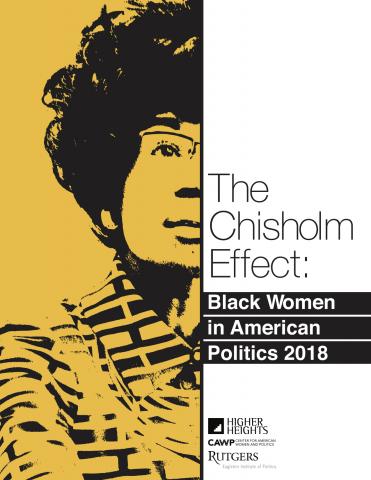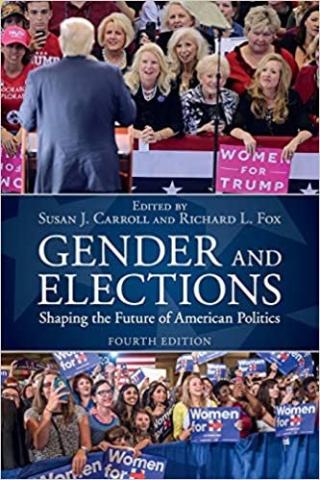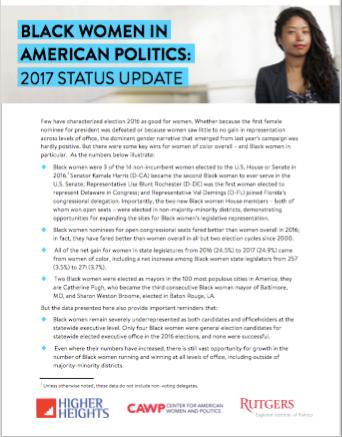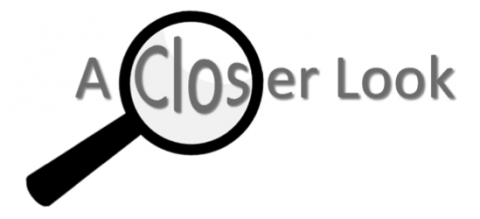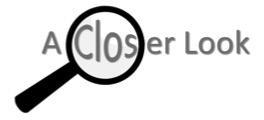Women in Elective Office 2018
Fact SheetElective OfficeCongressStatewide ExecutiveState LegislatureLocalThe Chisholm Effect: Black Women in American Politics 2018
By Kelly Dittmar, Ph.D.
ReportResearchCAWP ScholarGender and Race/EthnicityCongressStatewide ExecutiveState LegislatureLocalGender and Elections: Shaping the Future of American Politics, 4th Edition
Eds. Susan J. Carroll, CAWP, Rutgers University and Richard L. Fox, Loyola Marymount University
Cambridge University Press, 2018 Fourth Edition, 319 pagesBookResearchCAWP ScholarCandidates and CampaignsPolitical PartiesWomen Voters and the Gender GapGender and Race/EthnicityFederal ExecutiveCongressStatewide ExecutiveState LegislatureWomen in State Legislatures 2017
Fact SheetFact Sheet ArchiveState LegislatureWomen in Elective Office 2017
Fact SheetElective OfficeCongressStatewide ExecutiveState LegislatureLocalWomen of Color in Elective Office 2017
Fact SheetCongressStatewide ExecutiveState LegislatureLocalBlack Women in American Politics: 2017 Status Update
By Kelly Dittmar, Ph.D.
ReportResearchCAWP ScholarGender and Race/EthnicityCongressStatewide ExecutiveState LegislatureLocalWomen Running in 2017: Assessing NJ and VA State Legislative Elections
by Kelly Dittmar, Ph.D.
Fact SheetResearchCAWP ScholarA Closer LookPolitical PartiesCandidates and CampaignsState LegislatureCandidates Matter: Gender Differences in Election 2016
by Kelly Dittmar, Ph.D.
Fact SheetResearchCAWP ScholarA Closer LookPolitical PartiesCandidates and CampaignsCandidate RecruitmentGender and Race/EthnicityState LegislatureStatewide ExecutiveCongressWomen in State Legislatures 2017
by Kelly Dittmar, Ph.D.
Fact SheetResearchCAWP ScholarA Closer LookCandidates and CampaignsGender and Race/EthnicityState Legislature


